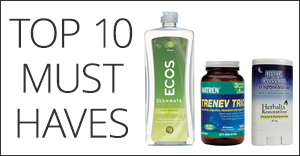We have all heard before how detrimental smoking is to our health. Years of research have shown that cigarettes are one of the most dangerous products that humans consume, if not the most dangerous.
The Center for Disease Control and Prevention reports that every year, an estimated 443,000 people die prematurely from smoking or smoke exposure, and around 8.6 million suffer from serious smoke-related diseases.
With all the attention focused on cigarettes, other products and substitutions have slipped through the cracks. One product in particular is becoming increasingly popular: E-cigarettes.
E-cigarettes use atomizers to create a vapor by heating up artificial juices and flavorings. Because there is no smoke, just vapor, people have assumed that they are safe.
However, new research from Harvard shows that e-cigarettes are linked to lung disease.
A common chemical in e-cigarette flavorings called diacetyl was linked to severe respiratory disease by Harvard T.H. Chan School of Public Health researchers.
Popcorn lung was a condition first found in popcorn factories where workers would inhale fumes from artificial butter flavorings and would develop the respiratory disease bronchiolitis obliterans.
“Recognition of the hazards associated with inhaling flavoring chemicals started with ‘popcorn lung’ over a decade ago. However, diacetyl and other related flavoring chemicals are used in many other flavors beyond butter-flavored popcorn, including fruit flavors, alcohol flavors, and, we learned in our study, candy-flavored e-cigarettes,” said lead author Joseph Allen, assistant professor of exposure assessment sciences.
As written in the study abstract:
“Since most of the health concerns about e-cigarettes have focused on nicotine, there is still much we do not know about e-cigarettes. In addition to containing varying levels of the addictive substance nicotine, they also contain other cancer-causing chemicals, such as formaldehyde, and as our study shows, flavoring chemicals that can cause lung damage,” said study co-author David Christiani, Elkan Blout Professor of Environmental Genetics.
The study showing that e-cigarettes are linked to lung disease was published in the journal Environmental Health Perspectives.
Note: None of the information in our website is intended to diagnose, treat, cure or prevent any illness or disease. The content on our website is for educational purposes only.
DON’T FORGET to sign up for our weekly newsletter to get our latest articles, updates, free recipes and giveaways.
Smoking still causes large number of deaths in U.S.
Smoking linked to most common type of breast cancer.
What happens when you quit smoking?
REFERENCES:
1. “Chemical Flavorings Found in E-cigarettes Linked to Lung Disease.” Harvard Gazette. Harvard Gazette, n.d. Web. 14 Dec. 2015.
2. “Flavoring Chemicals in E-Cigarettes: Diacetyl, 2,3-Pentanedione, and Acetoin in a Sample of 51 Products, Including Fruit-, Candy-, and Cocktail-Flavored E-Cigarettes.” EHP. EHP, n.d. Web. 14 Dec. 2015.

















